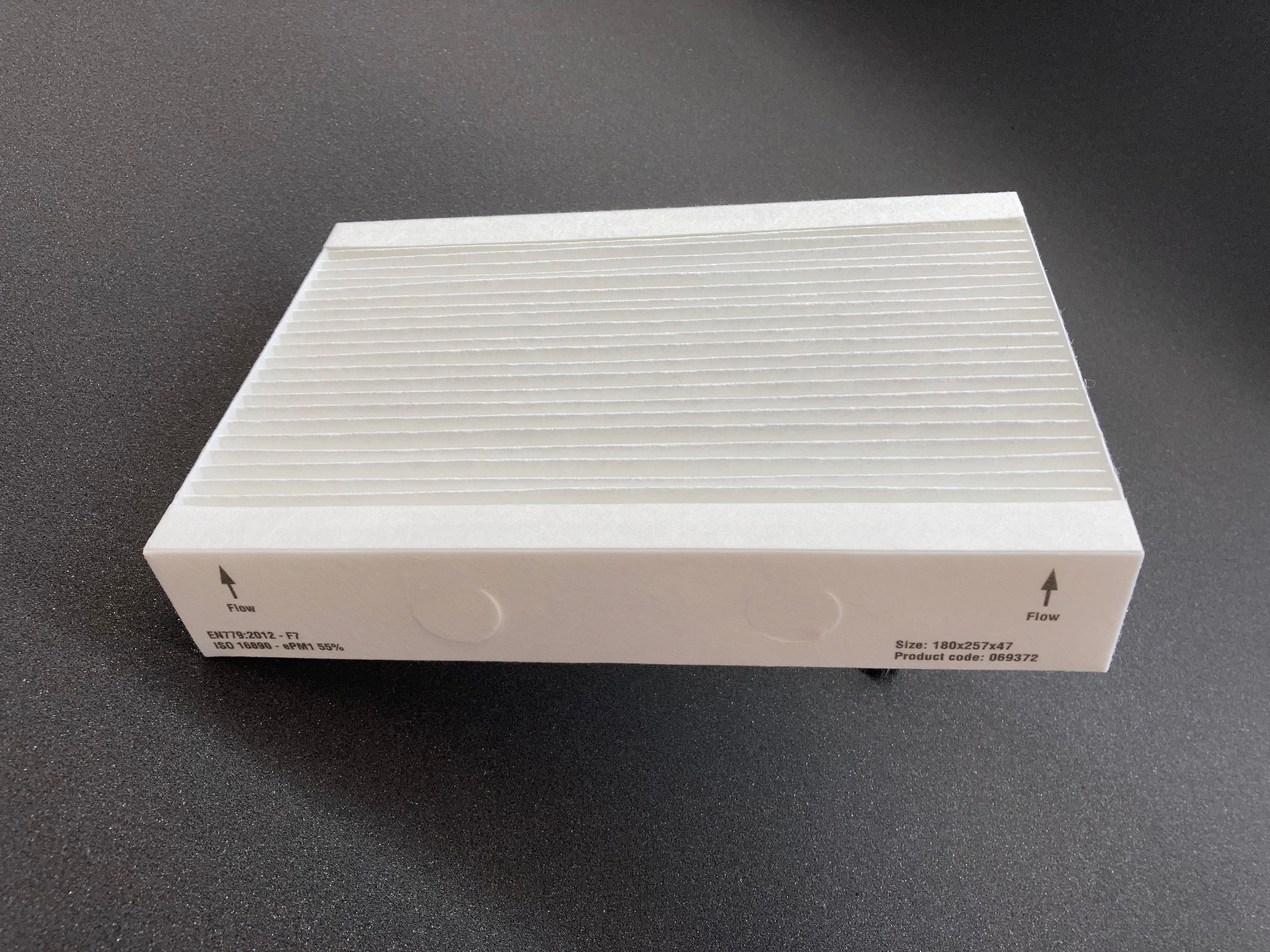Original Genvex filters should be used in all Genvex machines.

Change your filters on your ventilation machine regularly to a maintain your good air quality which you consume in the house or office. As the filter gets older it will clog up and restrict air movements and increase your energy consumption.
Set a calendar reminder on your phone
How ofter should I change my air filters?
The short answer is every 6 months, but you may not need to change, only clean. We would recommend to change every year as particles can block the filter that are not visible to the eye.
If you have a Genvex ventilation system installed in your home, it is important to regularly change the filters to ensure proper air quality.
Here's a step-by-step guide on how to change the filters:
Step 1: Turn off the ventilation system
Before you start changing the filters, turn off the ventilation system to prevent any accidents or damage. Good light is also important for inspection. There can be sharp parts in the machine, so be careful. Also the parts can be delicate so proceed with care.
Step 2: Locate the filter compartment
The filter compartment is usually located near the unit's air intake. Consult your Genvex manual if you're unsure of the location.
Or have a look at our website and look up your machine.
Click on the picture to link to Genvex machine.

Step 3: Remove the old filters
Remove the old filters from the filter compartment. Be sure to dispose of them properly. Note the direction of any arrows. Some filters are direction specific.
If it is important a arrow will be shown.

Usually the direction of flow is from the outside to the machine and from the building to the machine. Remember the filters also protect the machine.
Step 4: Clean the filter compartment
Before using the new filters, make sure to clean the filter compartment properly. You can clean it using a cloth or vacuum to remove any dust or debris. This will make sure that the new filters work well and provide clean air.
Wear gloves to protect your hand from sharp machine parts.
Step 5: Install the new filters
Insert the new filters into the filter compartment, making sure they are properly aligned. Refer to your Genvex manual for specific instructions on how to insert the filters. Again check our website for more information on your machine or if it is not listed please contact us.
Step 6: Test water drain
Pour approximately one litre of clean water into the condensate tray and insure that it drains properly with no obvious leaks from the machine or pipework.
Step 7: Turn on the ventilation system
After installing the new filters, turn on the ventilation system and check that it's working properly.
Conclusion
Changing Genvex filters is an important maintenance task that should be done regularly. The filters protect the machine and clean the air to the building protecting it occupants.
By following these simple steps, you can ensure that your ventilation system is working effectively and providing clean, fresh air for your home or office.
What is a F7 Filter?
A F7 air filter is a type of air filter used in HVAC (heating, ventilation, and air conditioning) systems. These filters are designed to remove particles and contaminants from the air that passes through the system, improving indoor air quality.
F7 filters are rated based on their ability to remove particles of different sizes from the air. F7 filters typically can remove particles as small as 0.3 microns in size.

F7 filters are capable of removing a wide range of contaminants from the air, including dust, pollen, mold spores, pet dust, and bacteria. They can also help reduce odors and improve indoor air quality.
In addition to improving air quality, F7 filters are also important to protect the machine systems by preventing dirt and debris from building up on system components. This can reduce the need for maintenance and repairs, and can also help lower energy costs by improving system efficiency.
Overall, F7 air filters are an important component of ventilation systems, helping to improve indoor air quality and protect system components from damage.
Ventilation machines usually are supplied with G4 filters as a minimum filtration, but if you can we would advise changing to F7 filters.
What is a G4 filter?
G4 air filters are a type of filter that are designed to capture larger particles. G4 filters are made up of synthetic fibres. This design allows for a larger surface area and better airflow while also capturing more particles.
G4 filters are the minimum filter grade that should be used for ventilation. They protect the machine and filter out course particles from the system.
They can be in the form of a pleated format as this:

or in a fibre mesh as this:

Notice here that the fibres are closer together on one side, so the air moves from the course side to the fine side. I know it is quite difficult to spot, but you can hold it up to a light to inspect more closely.
What Can G4 Air Filters Remove?
G4 air filters are designed to capture larger particles such as pollen, dust, and pet dust. They are not designed to capture smaller particles such as viruses or bacteria.
In conclusion, G4 air filters are an effective way to improve indoor air quality by capturing larger particles. They have a high particle capture efficiency rate and are commonly used in commercial and industrial settings. While they are not designed to capture smaller particles such as viruses or bacteria, they can be combined with other filter types to create a more comprehensive filtration system.
Can I wash G4 filters?
Mesh filters can be washed in luke warm water and hand soap. Do not spin dry. leave the filter course side down on a flat surface until dry.

